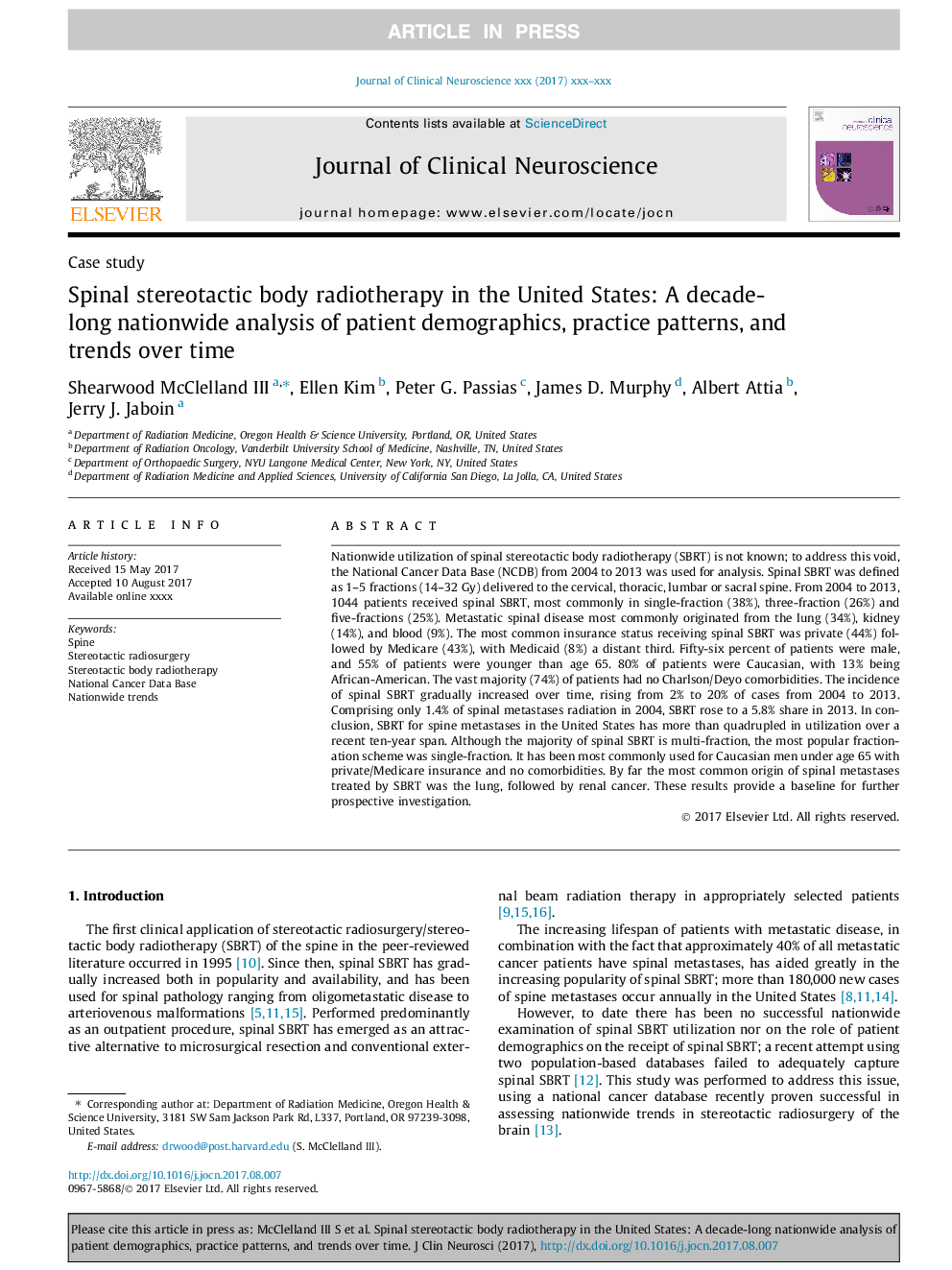| Article ID | Journal | Published Year | Pages | File Type |
|---|---|---|---|---|
| 8685476 | Journal of Clinical Neuroscience | 2017 | 4 Pages |
Abstract
Nationwide utilization of spinal stereotactic body radiotherapy (SBRT) is not known; to address this void, the National Cancer Data Base (NCDB) from 2004 to 2013 was used for analysis. Spinal SBRT was defined as 1-5 fractions (14-32Â Gy) delivered to the cervical, thoracic, lumbar or sacral spine. From 2004 to 2013, 1044 patients received spinal SBRT, most commonly in single-fraction (38%), three-fraction (26%) and five-fractions (25%). Metastatic spinal disease most commonly originated from the lung (34%), kidney (14%), and blood (9%). The most common insurance status receiving spinal SBRT was private (44%) followed by Medicare (43%), with Medicaid (8%) a distant third. Fifty-six percent of patients were male, and 55% of patients were younger than age 65. 80% of patients were Caucasian, with 13% being African-American. The vast majority (74%) of patients had no Charlson/Deyo comorbidities. The incidence of spinal SBRT gradually increased over time, rising from 2% to 20% of cases from 2004 to 2013. Comprising only 1.4% of spinal metastases radiation in 2004, SBRT rose to a 5.8% share in 2013. In conclusion, SBRT for spine metastases in the United States has more than quadrupled in utilization over a recent ten-year span. Although the majority of spinal SBRT is multi-fraction, the most popular fractionation scheme was single-fraction. It has been most commonly used for Caucasian men under age 65 with private/Medicare insurance and no comorbidities. By far the most common origin of spinal metastases treated by SBRT was the lung, followed by renal cancer. These results provide a baseline for further prospective investigation.
Related Topics
Life Sciences
Neuroscience
Neurology
Authors
Shearwood III, Ellen Kim, Peter G. Passias, James D. Murphy, Albert Attia, Jerry J. Jaboin,
